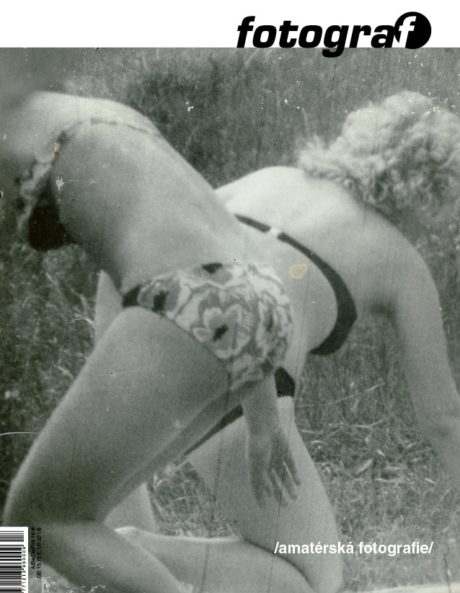The Splendeurs et Miséres of the Hinges of Historiography
The rise of the international movement of photo-amateurs is often evoked more or less as the movement originally envisioned itself. Quotes from the standard Czech bibliography illustrate the enthrallment of historians with these bygone intentions of yore, and therefore the present text offers a re- -focusing of this retrospective point of view. These shifts in perception are also discussed in Milena Slavická’s essay From Pictorialism to Staged Photography (Fotograf issue no. 7).
Prescribed History
At the beginning of the 20th century, the head official of the Technological Industrial Museum (Technologické průmyslové museum), Jaroslav Petrák, published several books and articles which sought to provide motivation for amateur photographic circles, of which he himself was part. He regarded the previous era of the so-callled wet plate process as a period of alchemy, and defined his own era by the daily volume of the Lumière dry-plate production (70,000 items). The threat of unwilling incendiary sacrifices to the God of Sun had ceased, and photography had become “public property, with a process formerly so mysterious having now penetrated to the broadest strata of society, where it plays an absolutely unforeseen and unexpected role” (Petrák, Jaroslav: Dějiny a vývoj fotografie. Plzeň 1912, p. 130 / The History and Evolution of Photography). It remains a question as to how Petrák would have viewed the evidence supporting this statement, in the form of a post-card, sent one hundred and ten years ago to Prague from the Ostrava-Karviná coal-mining district by a regular at Königstein’s public house. Nonetheless, I cannot think of a more relaxed illustration of the shift in the period’s approach to taking photographs. Making snaps without any artistic intent was not some distant undercurrent, but an overriding wave. And it was for this very reason that some functionaries in the societies of amateur art photography began to speculate as to how to distinguish themselves from it.
#17 Amateur Photography
Content
- ––– Profiles
- Martin Fryč
- Ivars Gravlejs
- Vojtěch Marek
- Václav Tvarůžka
- Viktor Frešo
- Jan Krhovský
- Jan Freiberg
- Lucie Králová
- Robert Carrithers
- Jáchym Kliment
- František Dostál
- Lucia Nimcová
- Joachim Schmid
- Miroslav Tichý
- Rudo Prekop
- Karel Kašpařík
- ––– Theory
- An Amateur: Noble Spirit - Flag Carrier - Outsider
- ––– Events
- 10th International Festival of Photography in Łódź
- ––– Reviews
- Mutating Medium: Gesture of Generational Oversaturation?
- Gianfranco Sanguinetti: Miroslav Tichý - Les Formes du Vrai / Forms of Truth. Kant, Prague 2010
- Pictorialism / Photography as Art 1890-1914
- Světlu vstříc / Towards Light
- The Mystical City of Viktor Kolář
- ––– History
- The Splendeurs et Miséres of the Hinges of Historiography
Archive
- #45 hypertension
- #44 empathy
- #43 collecting
- #42 food
- #41 postdigital photography
- #40 earthlings
- #39 delight, pain
- #38 death, when you think about it
- #37 uneven ground
- #36 new utopias
- #35 living with humans
- #34 archaeology of euphoria
- #33 investigation
- #32 Non-work
- #31 Body
- #30 Eye In The Sky
- #29 Contemplation
- #28 Cultura / Natura
- #27 Cars
- #26 Documentary Strategies
- #25 Popular Music
- #24 Seeing Is Believing
- #23 Artificial Worlds
- #22 Image and Text
- #21 On Photography
- #20 Public Art
- #19 Film
- #18 80'
- #17 Amateur Photography
- #16 Photography and Painting
- #15 Prague
- #14 Commerce
- #13 Family
- #12 Reconstruction
- #11 Performance
- #10 Eroticon
- #9 Architecture
- #8 Landscape
- #7 New Staged Photography
- #6 The Recycle Image
- #5 Borders Of Documentary
- #4 Intimacy
- #3 Transforming Of Symbol
- #2 Collective Authorship
- #1 Face







